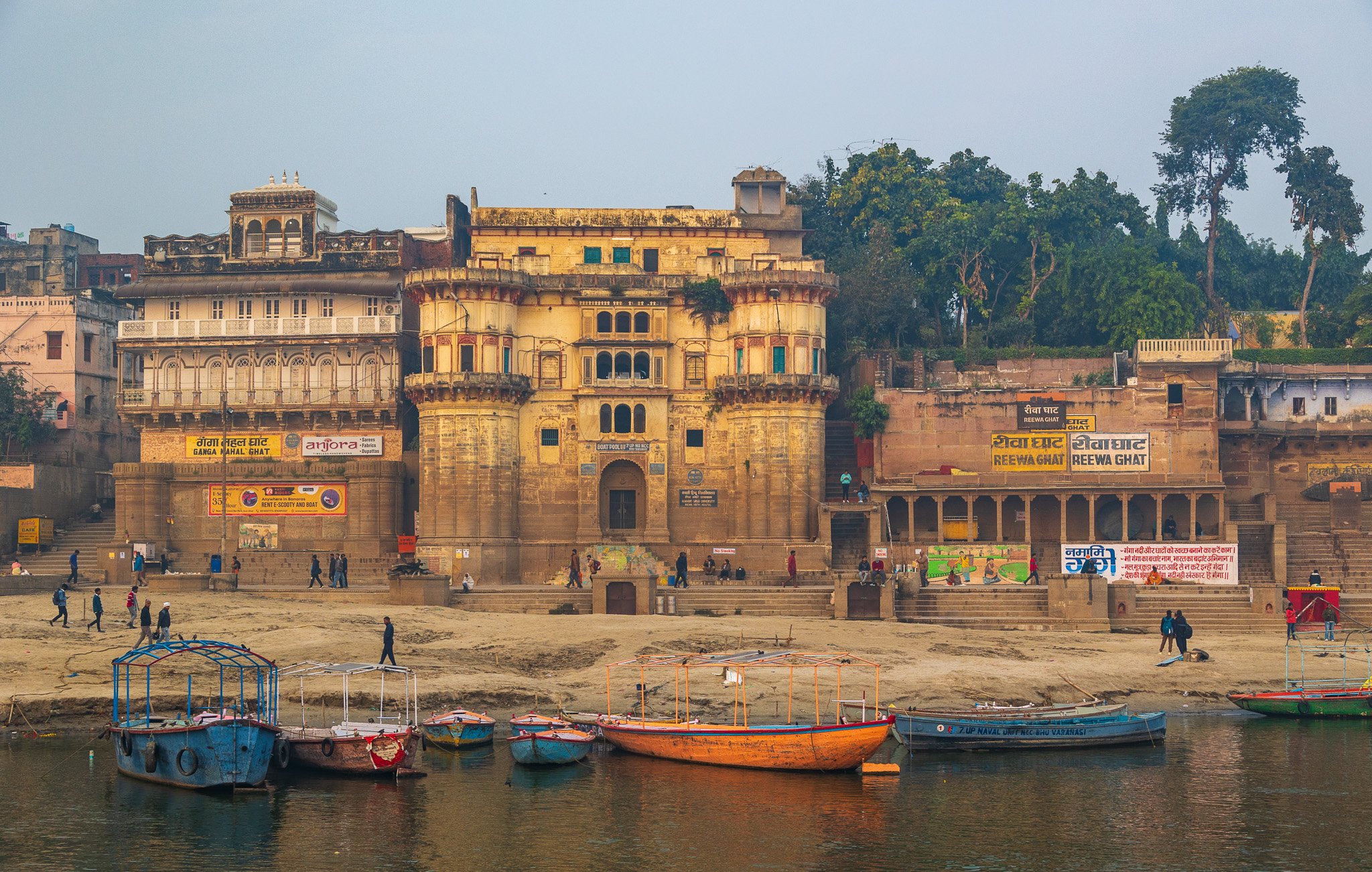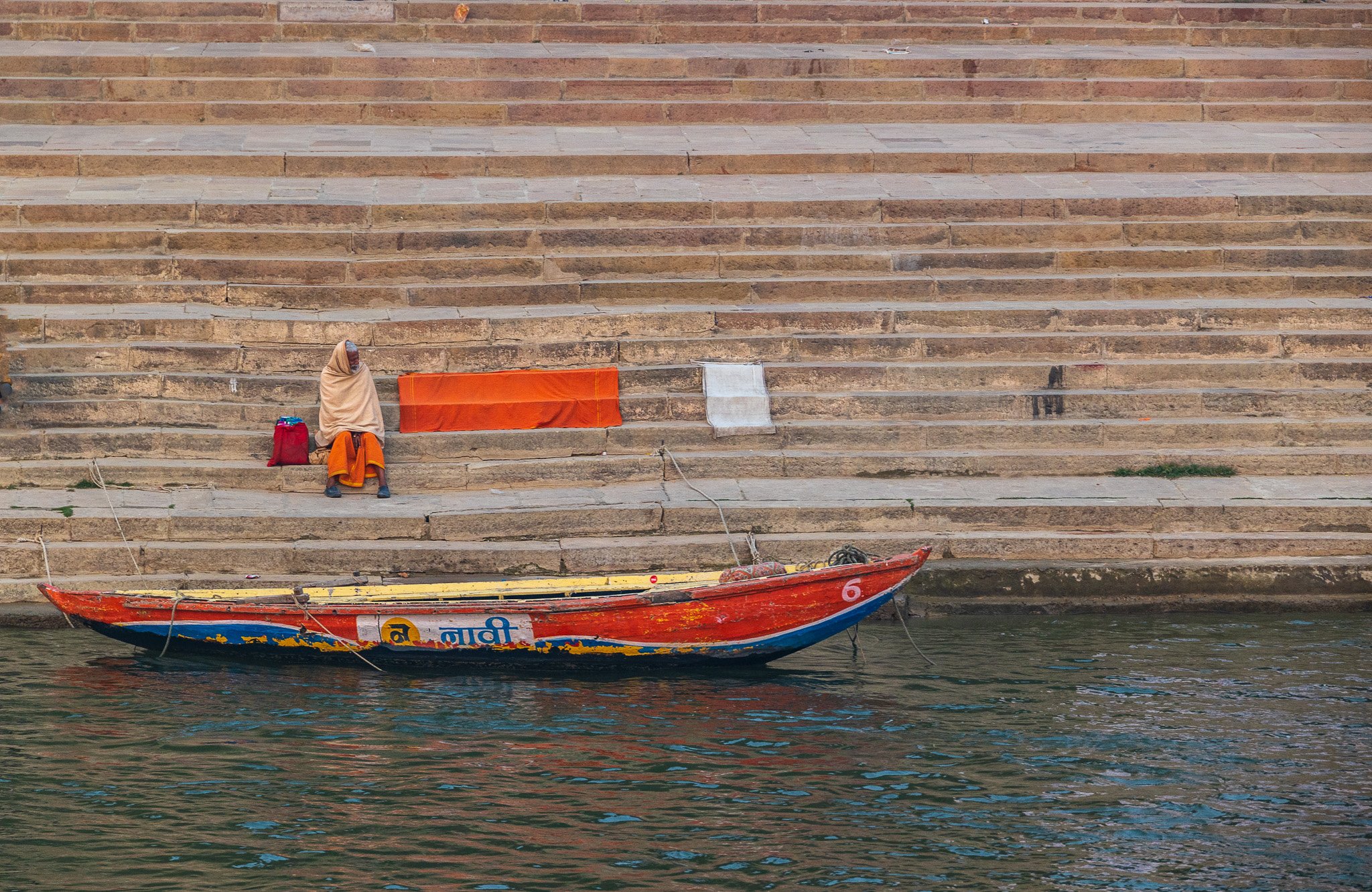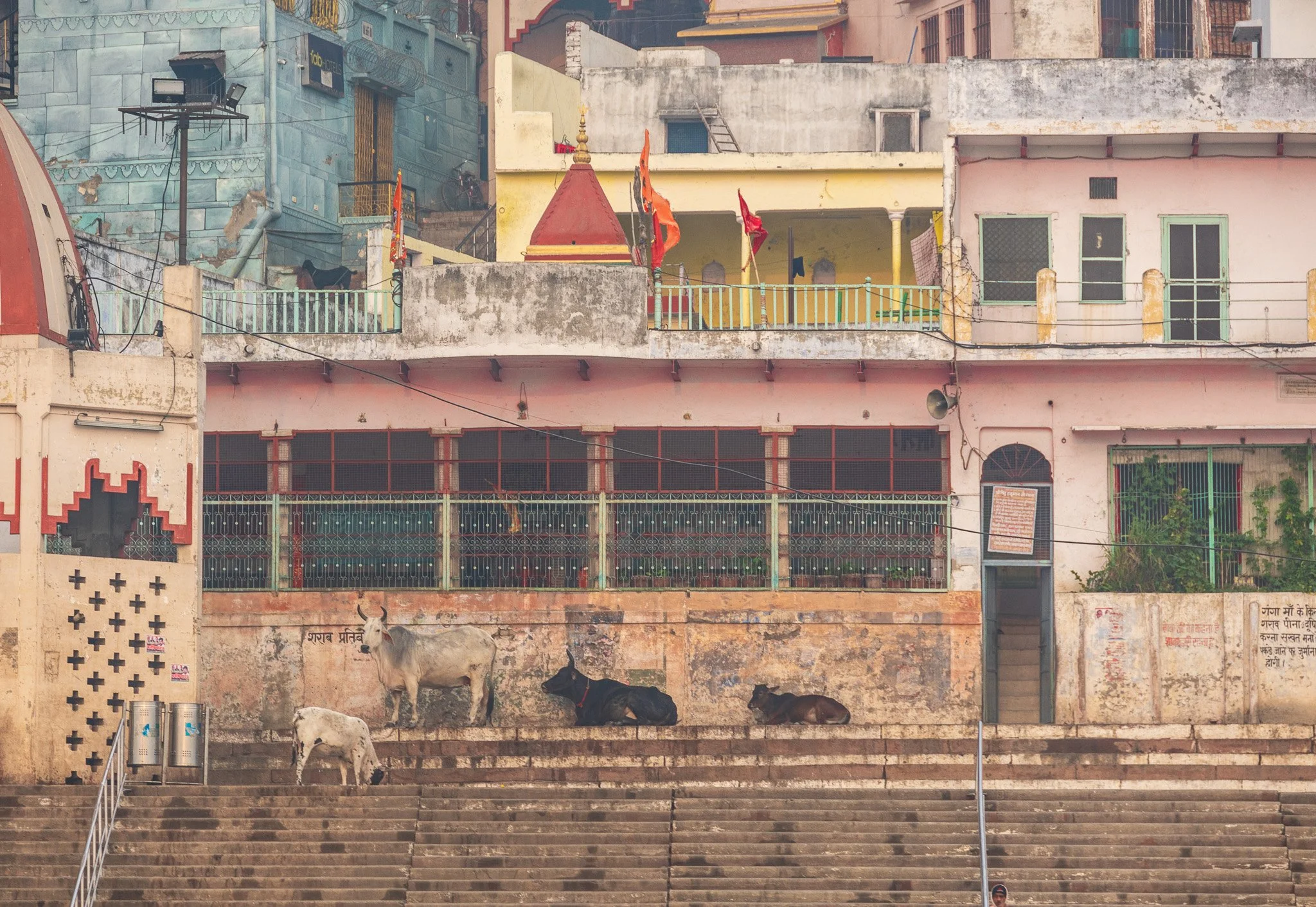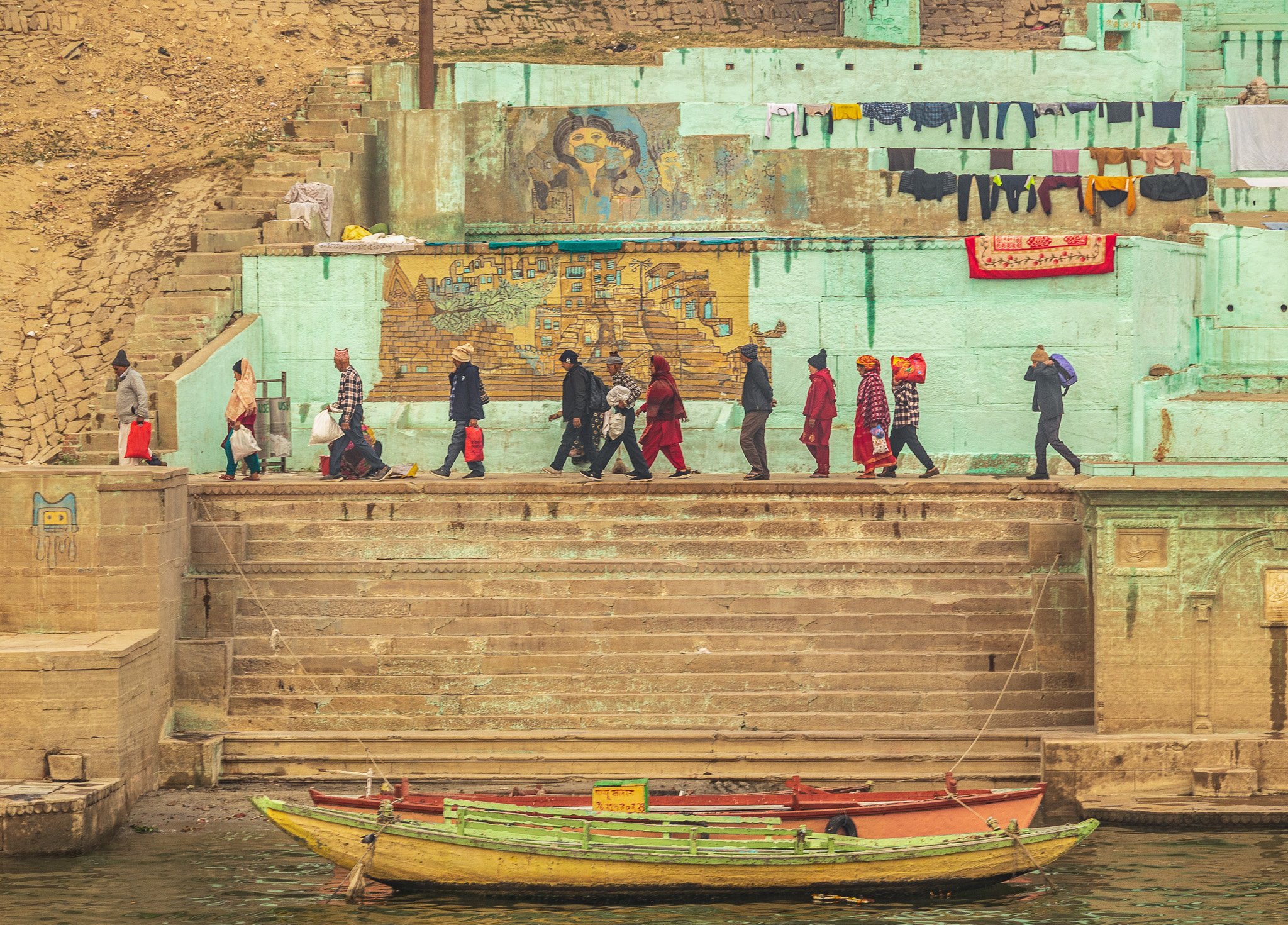After leaving Calcutta, Karl continued to have interesting experiences and started following the River Ganges west towards Mumbai (then Bombay). In his letter of November 15 1900, published in the Truro newspaper, Karl writes:
“I came to the Ganges some miles back and found neither bridge nor ferry boat and it was with great difficulty that I was able to cross at all, the locals refusing to row me over. After an hour or so, an old man came up alongside the bank and began throwing his load over on the shore it took him a few minutes but before he could row off for the other side again, I was aboard, bicycle and all, giving him some money I made him understand that I wanted to reach the opposite shore. He would not move the boat, but began shouting and screaming dreadfully, signaling all the while to me to go ashore again and when I stopped where I was, he became all the more furious and shouted to some men in the village nearby to come and help him put me out. Not wishing to get into any trouble I gave him eight annas (sixteen cents) as much money as he would earn in a week otherwise and told him to “towe chilly jilty” (to get along and hurry about it) and not wishing to lose what money I had given him, the old man rowed me over the wide and muddy river. Porpoises and turtles were in the water by the score and as we crossed they scattered in all directions, they were not the only objects in the water however, more than once the boat narrowly escaped coming in collision with dead bodies as they floated silently on their way down to the Hooghly river and out into the Bay of Bengal.”
“Then thirty miles from where I had crossed the Ganges I came to the Jumna River and found that all the locals were on the opposite shore. I shouted to them and made all manner of signs as well but without success. No one would come over for me. Then I thought of a plan. Taking a bright rupee from my pocket and letting the sunshine on it, I flashed the reflection across the river into the locals eyes, who in a minute knew what it was and in less time it takes to tell, half a dozen boats put off and came to my assistance. In a short while I was across and had the men carrying my bicycle up the steep bank, when very stupidly they let it go and down it went rolling over and over to the bottom again and almost in the water. Luckily nothing was damaged.”
The River Ganges originates from a pristine melting glacier in the Himalayas, crystal clear, pure water. However, as the river winds through various regions, it, unfortunately, becomes heavily contaminated with industrial toxic waste, including pesticides, insecticides, and human sewage. This unfortunate reality has earned the Ganges the reputation of being one of the most polluted rivers in the world. Nevertheless, it continues to serve multiple purposes for those who rely on it, for fishing, irrigation, drinking, cooking, bathing, and various Hindu rituals. Despite its relatively modest length of 2,500 km, the Ganges holds immense spiritual significance as one of the holiest rivers in the Hindu religion.
The River Ganges, also known as the River Ganga, is revered as the Goddess Ganga herself. Bathing in its waters is believed to absolve one of all sins, and the deceased's ashes are scattered in the river to attain salvation. Varanasi (then Benares), an ancient city that has thrived for over 5,000 years, holds a special place for accessing the Ganges.
For devout Hindus, passing away in Varanasi is considered the ultimate goal—consequently, individuals who are sick and nearing death flock to this sacred city. When someone passes away, their body is wrapped in cloth and immersed in the Ganges for purification. It is then adorned with marigold garlands and placed on a pyre for an open cremation. After approximately three hours, the ashes are collected in a large clay pot and dispersed into the Ganges. Varanasi witnesses around 100 cremations every day. To access the Ganges, one must descend a series of steps, known as "ghats." Varanasi has about 84 ghats, some are public and serve as bathing sites for pilgrims, while others are privately owned. Two of the ghats are exclusively used for cremations.
While Karl was travelling along the River Ganges in 1900, he wrote about seeing the rituals of Hinduism:
“On the banks of the Ganges are the burning Ghats, where at any moment during the twenty-four hours of the day one sees dead bodies brought from all parts loaded on the tops of wagon loads of wood. On arrival at the Ghats, the relatives of the dead take the wood - which the Government allows 6 annas (12 cents) to buy with - make it up into a pile at the edge of the river, then throw the body on the top, the whole is set on fire. As soon as burned out, the ashes are swept into the river. The locals prefer throwing the bodies into the river, without taking the trouble of burning them, but in the cities, they are watched, and it is with great difficulty that the authorities can stop it. In the country districts, however, nearly all dead bodies are thrown into the rivers by their fond relatives.”
While Karl may have inadvertently encountered the scenes unfolding along the banks of the Ganges, I was eager to witness these ghats and gain a glimpse into the rituals of the Hindu religion. However, it was important to me to approach this experience with utmost respect and reverence. Therefore, I embarked on a morning boat cruise along the sacred River Ganges, gliding past all 84 ghats while maintaining a respectful distance.
During my cruise, I watched pilgrims and tourists mingle amidst the funeral rituals while vendors sold garlands of marigolds and candles. Wood pyres burned continuously, seemingly without pause. There was an overwhelming amount to observe, an unfiltered view of people in their most vulnerable moments, grieving yet surrendering to their faith and participating in profound rituals. It felt both deeply personal and strangely serene.
I captured numerous photos from this experience, and I sincerely hope you can see the joy and peace in them.
If you are new to the Karl Chronicles, get caught up on our expedition around the world! Start here with: 100 highlights from 100 Chronicles
Then get caught up on the rest of our journey, click here for more Karl Chronicles
The Karl Journey is registered as an official expedition with the Royal Geographical Society




























